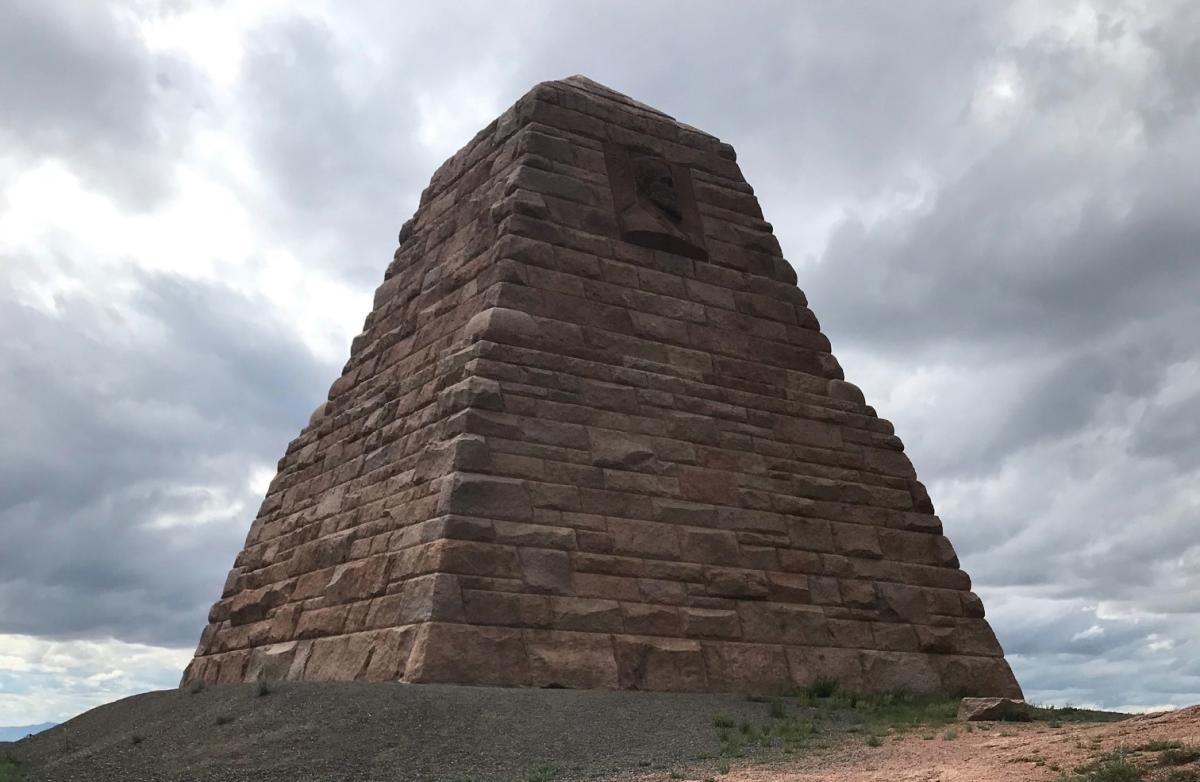The Ames Monument
Address:
209 Monument Road, Buford, WY

What you see… and what you don’t
The Ames Monument stands before you today. But the town of Sherman, once a bustling stop along the railroad, is only a memory. Hear about the settlement before it vanished.
An unusual 60 ft. pyramid shaped monument, this haunting granite mass stands alone on the prairie and towers over the remains of the one-time railroad town of Sherman. This monument was built in 1881 to honor the Ames brothers, Oliver and Oakes, who were influential leaders in the construction of the transcontinental railroad. The Union Pacific built the monument despite a scandal about the brothers’ mismanagement of railroad funds.
(July 2017 the Ames Monument became a National Historic Landmark.)
The pyramidal monument, designed by architect Henry Hobson Richardson, was built for the Union Pacific Railroad at the highest point on the line. (Sherman Summit, Wyoming 8,247 feet).
Sherman History: The small town of Sherman arose at the site north of the tracks where trains stopped to change engines on their transcontinental journey. The stop provided a roundhouse with five stalls and a turntable, two section houses, and a windmill with water tank. Trains were inspected at Sherman before beginning the long descent from the Sherman Pass summit, either east towards Cheyenne or west across the 130 feet (40 m) high Dale Creek Bridge to the Laramie Valley. The trusses for the original wooden trestle bridge located west of Sherman were prefabricated in Chicago and shipped to the site. The bridge was the highest railroad bridge in the world at the time of its completion in 1868.
Several hundred people lived in Sherman, hunkered down upon a rocky, barren landscape interrupted only by a general store, post office, schoolhouse, two hotels (Sherman House and Summit House), and two saloons.
In 1885 William Murphy purchased the land that contained the monument, intending to cover the pyramid with advertising. The Union Pacific Railroad Company had other plans. The company obtained a special deed to the property in 1889. (This is where the term “Murphy’s Law” came from) The railroad company’s decision to twice relocate the tracks farther south to take advantage of more gradual grades over the Laramie Mountains threatened Sherman’s tenuous existence a few hundred yards west of the monument. The town’s death knell came in 1918. The railroad company closed its station house and relocated the tracks about three miles (5 km) south. Residents soon abandoned Sherman, leaving behind a small cemetery that is still present today.






